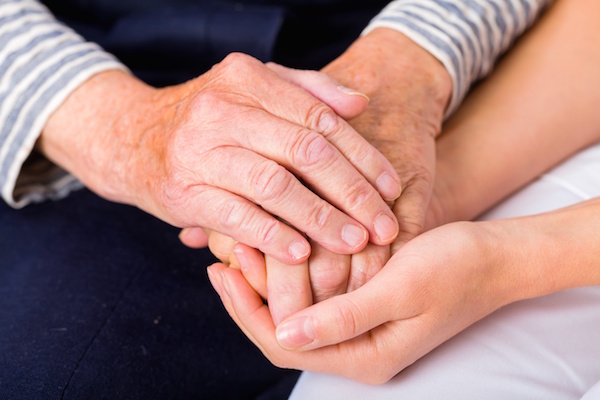THURSDAY, May 5, 2016 (HealthDay News) — Millions of American seniors have severe vision impairment, and with it comes the risk of a fall that could lead to disability, a new report finds.
About 2.8 million seniors are thought to have severe vision impairment — defined as either blindness or difficulty seeing, even with eyeglasses, according to data from the U.S. Centers for Disease Control and Prevention.
About 1.3 million of these older, vision-challenged Americans fell at least once in 2014, the new CDC report said.
Experts say the link between vision and balance is crucial, especially as people age.
Falls “represent a major source of disability and can lead to prolonged recoveries and lengthy stays in hospitals and long-term care facilities,” said Dr. Robert Glatter, an emergency physician at Lenox Hill Hospital in New York City.
He said that hip and leg or arm fractures, as well as wounds that are slow to heal, mean falling can be disabling or even life-threatening for older people.
Vision checks are key to prevention, Glatter said. “Monitoring changes in visual acuity is a critical aspect of screening in older persons who live independently, for fall risk — especially if they use canes or walkers,” he said.
The study was led by CDC investigator John Crews and involved 2014 federal data from the Behavioral Risk Factor Surveillance System.
Crews and colleagues found that fall risk among seniors rose significantly as vision failed. For example, while about 28 percent of seniors without severe vision trouble experienced at least one fall in 2014, that number jumped to almost 47 percent in people who had such eyesight issues.
Other health issues, such as chronic illness, gait problems, leg weakness and the use of multiple medicines, could push the risk of falling even higher, the researchers said.
And the financial cost? One 2013 study estimated the direct medical cost of falls among seniors at $34 billion annually, the researchers said.
Luckily, simple prevention methods mean that many falls don’t have to happen.
Dr. Gisele Wolf-Klein directs geriatric education at Northwell Health in New Hyde Park, N.Y. She offered up a ‘Top Ten’ list of ways people can avoid dangerous falls.
- Have a family member or a friend come to take a “fresh look” at your home: they may point out an obstacle you hadn’t identified, such as a throw rug or cable on the floor, which might cause you to trip.
- Replace light bulbs, to provide you with good lighting in all the rooms, staircases and hallways that you use.
- Make sure your prescription lenses have been recently upgraded by your ophthalmologist and avoid bifocal lenses, unless absolutely necessary.
- Check the soles of your slippers: if they are worn out, replace them.
- Rearrange your furniture so that your most needed items are within easy reach of your favorite chair.
- Unclutter your home and dispose of items that are no longer meaningful to you.
- Be careful of slippery surfaces in your kitchen and in your bathroom.
- Consider having an occupational therapist advise you on how to professionally safe-proof your home with grab bars and non-skid equipment.
- Participate regularly in an exercise balance program, such as Tai Chi.
- Get a Life Alert system to summon help, in the event of a fall.
The new study was published in the May 6 issue of the CDC’s Morbidity and Mortality Weekly Report.
More information
Find out more about falls prevention at the National Council on Aging.
Copyright © 2025 HealthDay. All rights reserved.

